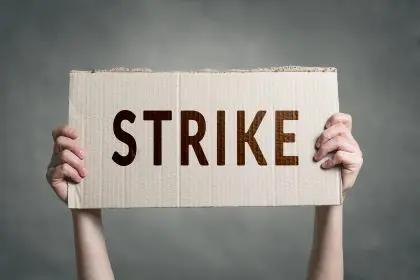Stress. It’s something we all experience, but not everyone reacts to it the same way. For some, it acts like gasoline on a flame — igniting motivation, energy and razor-sharp focus. For others, it feels like a concrete wall — immobilizing, overwhelming and stifling every effort to move forward.
Understanding why stress has such drastically different effects is more than just a psychological curiosity. It’s essential for navigating life, managing relationships and unlocking human potential.
The biology behind stress responses
Stress begins in the brain. When a person perceives a threat — whether physical, emotional or social — the brain triggers the hypothalamic-pituitary-adrenal (HPA) axis. This system sends out hormones like cortisol and adrenaline, prepping the body for action. Pupils dilate, the heart races and muscles tense. This is the “fight or flight” mechanism at work.
For some, these physiological changes enhance performance. Think of an athlete before a big game or a speaker stepping onto a stage. The pressure sharpens their instincts. But for others, the same physical rush causes them to freeze, falter or shut down completely. The difference often lies in brain chemistry, personal history and even genetics.
Why stress fuels high performers
In high-pressure situations, some individuals become more alert, more focused and even more creative. These people often exhibit strong emotional regulation and resilience. Their bodies still experience the chemical cocktail of stress, but their interpretation of the situation differs.
Instead of seeing a challenge as a threat, they view it as an opportunity. This mental framing matters. Positive anticipation floods the brain with dopamine, a reward chemical, which helps push through discomfort. It’s not that they don’t feel the stress — it’s that they’ve trained themselves to ride it like a wave.
Additionally, high performers often have a history of mastering difficult situations. Success breeds confidence. When the brain recalls previous wins under pressure, it naturally gears up for another. That feedback loop of achievement helps them stay motivated even when others might feel overwhelmed.
When stress becomes paralyzing
On the other side of the spectrum, there are individuals who find stress suffocating. This isn’t about weakness — it’s about how the brain has been conditioned to respond.
People with trauma histories or those exposed to chronic stress may have an overactive amygdala — the part of the brain responsible for processing fear. Their bodies are primed for danger, even in non-threatening environments. Instead of gearing up for action, their systems become flooded with anxiety and doubt.
Paralysis isn’t a choice; it’s a defense mechanism. The brain essentially decides that shutting down is the safest option. For these individuals, stress doesn’t bring clarity — it clouds judgment, disrupts memory and impairs problem-solving abilities.
The role of upbringing and environment
Early experiences play a major role in how someone responds to stress. A supportive environment in childhood helps develop healthy coping skills and confidence. When caregivers teach problem-solving, emotional expression and resilience, children grow up more capable of navigating high-stakes situations.
Conversely, chaotic or unpredictable childhoods can lead to hypervigilance and poor emotional regulation. In adulthood, this often manifests as avoidance, anxiety or complete shutdown under stress.
Even the messages people receive growing up can shape their stress response. A child encouraged to “tough it out” without emotional support may grow into an adult who internalizes stress, feeling pressure to perform perfectly or not at all.
Stress perception is personal
What fuels one person may paralyze another because stress is ultimately a matter of perception. Two people can face the exact same circumstances — tight deadlines, financial struggles, relationship issues — and have entirely different reactions. The key lies in how each person evaluates their ability to cope.
If someone believes they have the tools to manage a challenge, they’re more likely to feel energized by it. If they feel helpless or inadequate, the same situation can seem insurmountable. This internal dialogue shapes the entire experience of stress.
Self-talk, past experiences, social support and mental health all play roles. Confidence breeds courage. Fear breeds paralysis.
Cultural influences on stress responses
Societal norms also shape how individuals respond to stress. In some cultures, stress is seen as a sign of productivity and ambition. In others, it’s treated as something to be hidden or avoided. These perceptions influence behavior and coping strategies.
Expectations around masculinity, for example, often discourage emotional vulnerability. Men might be more likely to push through stress without asking for help, which can sometimes look like confidence but may mask internal chaos. Meanwhile, women are often socialized to be nurturing and emotionally expressive, which can influence how they experience and report stress.
Understanding these cultural pressures is essential in creating environments where everyone can thrive under pressure — not just those who appear to handle it well.
How to channel stress into strength
For those who struggle with stress paralysis, change is possible. The brain is malleable. Through practice and intentional effort, people can rewire how they respond to difficult situations.
Key strategies include:
Mindfulness and meditation: These help calm the nervous system and train the brain to stay present rather than catastrophizing.
Reframing challenges: Seeing obstacles as opportunities for growth can make stress feel purposeful.
Building small wins: Achievements, even minor ones, build confidence and provide evidence that challenges can be overcome.
Social connection: Talking through stress with trusted friends or professionals reduces isolation and provides perspective.
Professional therapy: Mental health support can uncover root causes and provide customized coping tools.
These steps don’t eliminate stress, but they help people harness it. The goal isn’t to avoid pressure — it’s to learn how to stand tall in the middle of it.
Why this understanding matters now
In a world marked by uncertainty, economic shifts, political tension and healthcare challenges, stress is a constant companion. But it doesn’t have to be a destructive one.
Employers, educators and community leaders must recognize that not everyone reacts to pressure in the same way. Creating environments that support a range of responses is critical. That includes making space for emotional expression, offering flexibility and promoting mental health resources.
The difference between someone who thrives under pressure and someone who breaks down isn’t always about talent. Sometimes it’s about training, support and belief in oneself.
A call for compassion and awareness
The next time you see someone crumble under pressure while another seems to soar, remember this: Stress is deeply personal. What ignites one soul may extinguish another’s flame. Instead of judging, we can seek to understand. Instead of assuming strength is silent, we can create space for all kinds of courage — including the kind that comes from asking for help.
By learning more about how stress operates in the body and mind, we can unlock new ways of supporting ourselves and each other. And in doing so, we might just find that the line between fuel and fear is thinner — and more transformable — than we ever imagined.













